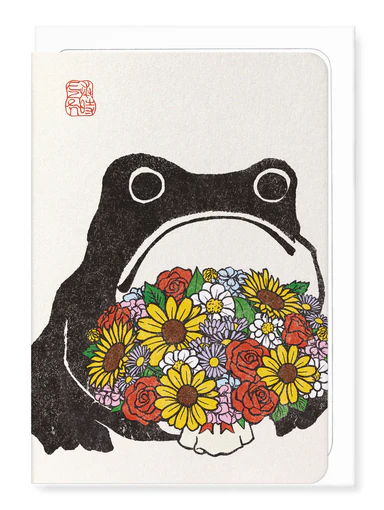In Japanese, the word for frog is "kaeru", which also means to "return" and therefore the symbolism is the return of luck and good fortune. Some even place a frog amulet in their purse or wallet so that money will always find its way back for financial prosperity.
The most famous haiku poem, by the most famous Japanese poet Matsuo Basho (1644-1694), describes a frog:
古池や蛙飛びこむ水の音
Furu ike ya / kawazu tobikomu / mizu no oto
An ancient pond / a frog jumps in / the splash of water
For Zen monks, painting and calligraphy in simple black ink on paper provided a medium to express complex philosophical ideas, often with minimal simplicity. The main aim of any Zen images, similarly, was to reduce an image to as few brush strokes as possible, but which would express entirely the artist and subject, stripping away all that was deemed unnecessary and leaving behind the core elements or spirit. Seemingly simple; yet exceedingly difficult in practice.

Matsumoto Hoji (1814)
The design by Matsumoto Hoji of a frog done with simple minimal strokes perfectly accompanies the above concept, stripping details and reducing the lines and elements to a core of simplicity.
This picture of a frog is originally a print from the Meika Gafu (A Book of Paintings by Celebrated Artists), published in 1814, an encyclopaedia of artists. The original painting however, was by the artist Matsumoto Hoji. Very little seems to be known about the artist, other than that his paintings of frogs belong to a category of Japanese painting known as Zenga, or ‘Zen painting’.






















































Leave a comment